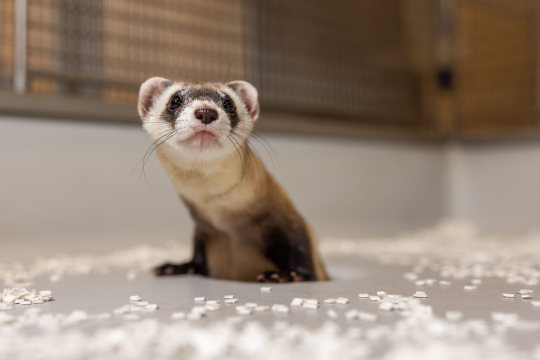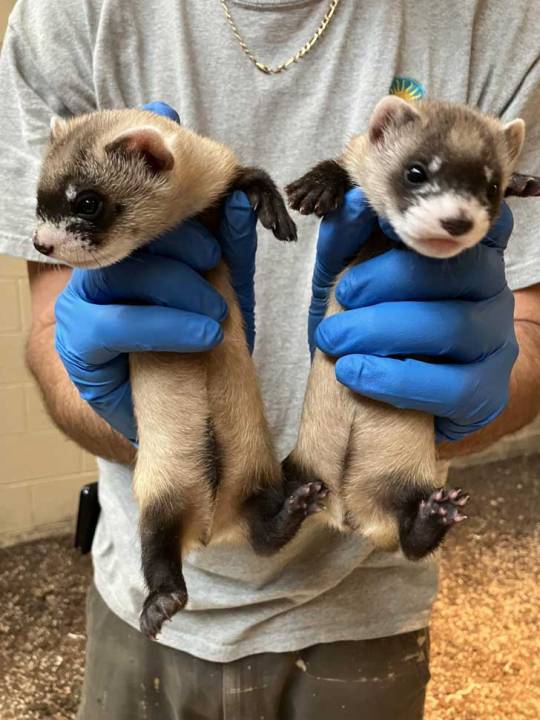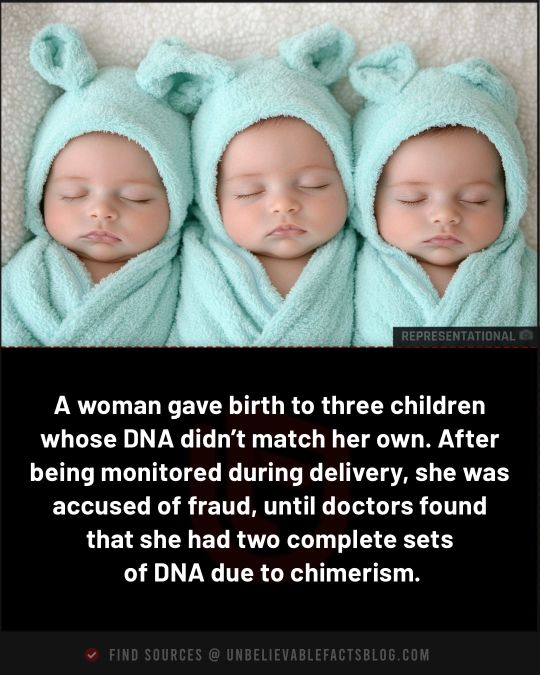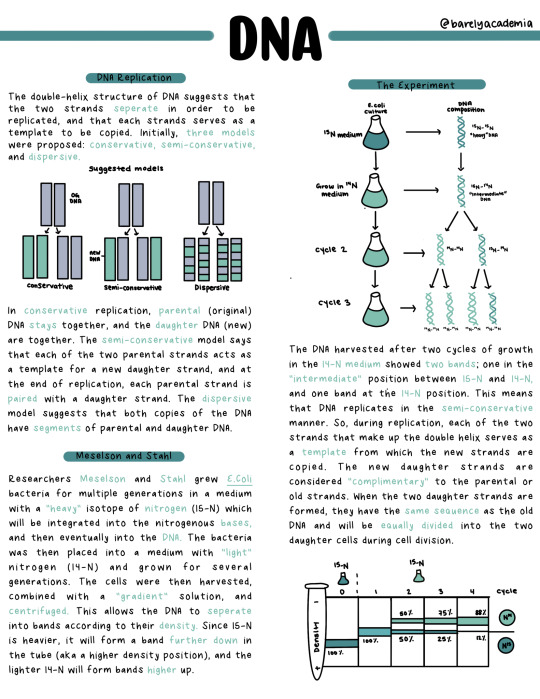#genetic dna
Explore tagged Tumblr posts
Text
Exploring the Future of Genetic DNA Testing Kits: Trends and Innovations to Watch

The rise of Genetic DNA Testing Kits in India marks a new era in personalized healthcare, ancestry exploration, and wellness management. With the convenience of at-home testing, people are increasingly interested in learning more about their genetic makeup. Whether it’s discovering one’s ancestry, identifying predispositions to diseases, or personalizing wellness routines, genetic DNA testing is becoming a key component of modern health management in India. As advancements in technology continue to shape this field, it’s important to explore the current trends and innovations transforming the genetic testing landscape.
The Growing Popularity of Genetic DNA Testing Kits in India
The adoption of Genetic DNA Testing Kits in India is growing at an impressive rate. Several factors have contributed to this surge in interest:
1. Increased Health Awareness: With growing health consciousness among individuals, more people are seeking ways to better understand their bodies and take proactive steps to prevent diseases. Genetic testing kits provide a non-invasive and efficient method for discovering genetic predispositions to various health conditions such as diabetes, heart disease, and certain types of cancer.
2. Affordability and Accessibility: The cost of genetic DNA testing kits has decreased significantly in recent years, making them accessible to a larger portion of the population. Furthermore, many testing services have streamlined the process to be user-friendly, allowing individuals to collect a sample at home and mail it to a laboratory for analysis.
3. Ancestry and Heritage Exploration: In a culturally diverse country like India, many people are curious about their ethnic roots and family history. Genetic DNA Testing Kits in India offer the chance to explore one’s ancestry, revealing information about geographical origins and familial connections that may not be part of documented family history.
4. Rise in Preventive Healthcare: In a shift from reactive to preventive healthcare, many people now prefer genetic testing to identify possible health risks. This awareness encourages individuals to adopt healthier lifestyles or seek early medical intervention if necessary.
5. Growing Demand for Personalized Wellness Solutions: One of the most exciting applications of genetic DNA testing is its role in personalized wellness plans. Based on genetic results, people can receive customized advice on their diet, exercise routines, and even skincare products, ensuring that their wellness strategies are optimized for their specific genetic profile.
The Science Behind Genetic DNA Testing Kits
At the core of every genetic DNA testing kit is the ability to analyze an individual's DNA, which is made up of thousands of genes. Each gene carries information that dictates various biological traits, such as physical characteristics, susceptibility to certain health conditions, and even behavioural tendencies.
How it Works:
1. Sample Collection: Most genetic DNA testing kits require users to provide a saliva sample. The kit typically includes a sterile container for saliva collection, which is then sent to a lab for analysis.
2. DNA Extraction: In the laboratory, DNA is extracted from the cells in the saliva sample. This DNA is then analyzed using advanced genetic sequencing technologies.
3. Data Analysis: The lab compares the individual’s DNA to known genetic markers associated with specific traits, conditions, or ancestry information. The results are compiled into a comprehensive report, which can include insights into health risks, wellness recommendations, and ancestral origins.
4. Results Delivery: Once the analysis is complete, users receive their results either via an online platform or through a physical report. This data can offer insights into genetic predispositions to certain diseases, lifestyle recommendations, or ancestral heritage.
Current Trends in Genetic DNA Testing Kits in India
As more people turn to Genetic DNA Testing Kits in India, several trends are shaping the future of this market:
1. Precision Medicine Integration
Genetic testing is playing an increasingly vital role in the field of precision medicine. This approach to healthcare customizes treatments and medical recommendations based on an individual's genetic profile. For example, cancer patients can now undergo genetic testing to determine how their bodies will respond to specific treatments, allowing healthcare providers to develop targeted therapies. In India, this trend is gradually making its way into mainstream healthcare as genetic data becomes an essential tool for personalized treatment plans.
2. Expansion of Ancestry Services
While healthcare applications remain a dominant focus, the use of Genetic DNA Testing Kits in India for ancestry exploration is gaining momentum. These tests allow individuals to trace their genetic origins, often revealing links to different regions of India or beyond. In a nation as culturally rich and diverse as India, ancestry testing offers a fascinating window into one’s heritage, often sparking interest in historical and familial roots.
3. Advanced Wellness Recommendations
Another exciting trend is the use of genetic data to provide highly personalized wellness advice. Genetic DNA testing kits can now analyze genetic markers that influence everything from metabolism and nutrient absorption to sleep patterns and skin health. As a result, individuals receive tailored recommendations on diet, exercise, and skincare that align with their unique genetic makeup.
4. Ethical Considerations and Data Privacy
As genetic testing becomes more widespread, ethical concerns and data privacy issues are also coming to the forefront. Individuals providing their DNA for analysis may be concerned about how their data will be used, stored, or shared. Ensuring that genetic data is handled securely and ethically is critical to maintaining consumer trust. In India, regulations surrounding genetic data privacy are evolving to protect users while enabling the benefits of personalized healthcare and ancestry services.
5. Integration of Artificial Intelligence (AI)
Artificial intelligence is revolutionizing genetic DNA testing by speeding up the analysis process and enhancing the accuracy of results. AI algorithms can sift through vast amounts of genetic data to detect patterns and correlations that may not be obvious through traditional methods. This integration of AI in genetic testing is expected to yield more accurate health predictions and facilitate the development of new healthcare solutions.
The Future of Genetic DNA Testing in India
The future of Genetic DNA Testing Kits in India looks promising as the technology continues to evolve. Several key developments are likely to drive further growth:
1. More Comprehensive Testing Panels: As research into the human genome expands, future genetic DNA tests may offer even more detailed insights into health risks, personal traits, and ancestry. The ability to screen for more diseases and traits will provide users with a broader understanding of their genetic makeup.
2. Collaborations with Healthcare Providers: The future of genetic testing will likely involve closer collaborations between genetic testing companies and healthcare providers. By integrating genetic test results into regular healthcare check-ups, individuals can receive more comprehensive care based on their genetic profiles.
3. Real-Time Health Monitoring: As wearable technology and genetic testing converge, we may soon see the development of real-time health monitoring solutions based on genetic data. This would allow individuals to receive continuous insights into their health, enabling proactive management of wellness and disease prevention.
Conclusion
The rise of Genetic DNA Testing Kits in India is transforming the way people understand their bodies, manage their health, and explore their ancestry. With trends such as precision medicine, AI integration, and personalized wellness becoming more prevalent, genetic testing kits are set to play an even bigger role in the future of healthcare and wellness in India. While ethical considerations and data privacy remain important issues, the overall potential of genetic testing to improve lives is undeniable. As technology continues to advance, genetic testing will likely become an essential tool in every individual’s health and wellness journey.
#Genetic DNA Testing Kits India#Genetic DNA Testing Kits#India#kerala#kochi#dna testing kits#genetic dna#dna test#dna kits
0 notes
Text
"Once thought to be extinct, black-footed ferrets are the only ferret native to North America, and are making a comeback, thanks to the tireless efforts of conservationists.
Captive breeding, habitat restoration, and wildlife reintegration have all played a major role in bringing populations into the hundreds after near total extinction.
But one other key development has been genetic cloning.
In April [2024], the United States Fish and Wildlife Service announced the cloning of two black-footed ferrets from preserved tissue samples, the second and third ferret clones in history, following the birth of the first clone in December 2020.
Cloning is a tactic to preserve the health of species, as all living black-footed ferrets come from just seven wild-caught descendants. This means their genetic diversity is extremely limited and opens them up to greater risks of disease and genetic abnormalities.

Now, a new breakthrough has been made.
Antonia, a black-footed ferret cloned from the DNA of a ferret that lived in the 1980s has successfully birthed two healthy kits of her own: Sibert and Red Cloud.
These babies mark the first successful live births from a cloned endangered species — and is a milestone for the country’s ferret recovery program.
The kits are now three months old, and mother Antonia is helping to raise them — and expand their gene pool.
In fact, Antonia’s offspring have three times the genetic diversity of any other living ferrets that have come from the original seven ancestors.

Researchers believe that expanded genetic diversity could help grow the ferrets’ population and help prime them to recover from ongoing diseases that have been massively detrimental to the species, including sylvatic plague and canine distemper.
“The successful breeding and subsequent birth of Antonia's kits marks a major milestone in endangered species conservation,�� said Paul Marinari, senior curator at the Smithsonian’s National Zoo and Conservation Biology Institute.
“The many partners in the Black-footed Ferret Recovery Program continue their innovative and inspirational efforts to save this species and be a model for other conservation programs across the globe.”

Antonia actually gave birth to three kits, after mating with Urchin, a 3-year-old male ferret. One of the three kits passed away shortly after birth, but one male and one female are in good health and meeting developmental milestones, according to the Smithsonian.
Mom and babies will remain at the facility for further research, with no plans to release them into the wild.
According to the Colorado Sun, another cloned ferret, Noreen, is also a potential mom in the cloning-breeding program. The original cloned ferret, Elizabeth Ann, is doing well at the recovery program in Colorado, but does not have the capabilities to breed.
Antonia, who was cloned using the DNA of a black-footed ferret named Willa, has now solidified Willa’s place as the eighth founding ancestor of all current living ferrets.
“By doing this, we’ve actually added an eighth founder,” said Tina Jackson, black-footed ferret recovery coordinator for the U.S. Fish and Wildlife Service, in an interview with the Colorado Sun.
“And in some ways that may not sound like a lot, but in this genetic world, that is huge.”

Along with the USFWS and Smithsonian, conservation organization Revive & Restore has also enabled the use of biotechnologies in conservation practice. Co-founder and executive director Ryan Phelan is thrilled to welcome these two new kits to the black-footed ferret family.
“For the first time, we can definitively say that cloning contributed meaningful genetic variation back into a breeding population,” he said in a statement.
“As these kits move forward in the breeding program, the impact of this work will multiply, building a more robust and resilient population over time.”"
-via GoodGoodGood, November 4, 2024
#ferret#ferrets#mustelid#black footed ferret#conservation#endangered species#conservation biology#biodiversity crisis#dna#genetics#cloning#good news#hope#hope posting#hopecore#hopepunk
9K notes
·
View notes
Text
I remember that when everything was happening with Noah Schnapp, so many people were saying that ‘he’s a white coloniser!’ ‘he’s clearly European!’ and ‘how are we supposed to think he’s indigenous to the Middle East when he looks like that?!’ They were screaming so much about he couldn’t possibly be from the swana region due to being pale, despite the fact that… wait for it…
Noah Schnapp is a Moroccan Jew.
The exact the same thing happened with Jerry Seinfeld too, despite him being a Syrian Jew.
But what this tells me is that so many American and European leftists fundamentally do not understand what North Africans and Southwest Asians look like. They do not understand that many Middle Eastern groups are pale, many Middle Eastern groups share features with Europeans— I mean, the Middle East literally borders Europe, did you not expect us to have similarities? This stretches back to the ancient world too. We know that in Yehuda there were gingers, as shown by King David*. Iirc, studies on Rameses the second’s remains show that he most likely had an olive tanned complexion and reddish-blondish hair, similar to a European Mediterranean look— which makes total sense seeing as Egypt is literally a Mediterranean country as well
It’s not just Jews. Persians, Kurds, Assyrians, Copts, Amazigh, Arabs from the Arabian Peninsula**, all of these ethnic groups are incredibly diverse in their features, even without any significant genetic influence from other areas. You cannot just project American and European black and white concepts of race onto the Middle East and act as if that is reality. The world is not split into pale people in the north, brown people in the middle, and black people in the south, and if you genuinely believe that then you really need to look at some pictures of the groups that you’re claiming to be the defender of. Please. I’m so tired of this bullshit lol
*I know that the historical evidence for David is shaky at best and we’re not sure if he was real or not (I personally believe it’s a King Arthur sort of situation where there was a real person here that got turned into legend), what I’m trying to say is that if the Ivrim could have a figure like this who was ginger, then the Ivrim clearly had gingers. Nobody come for me please
**not adding other Arabs because there tends to be genetic mixes with other groups, and my point is about how even without distinct genetic markers from each other, middle easterners groups can turn out with a super intense variation in appearance, especially skin tone
#like it’s funny to me when I see Ashkenazim say that they’re pale because that’s the European genetic mixing or whatever#cause like there’s plenty of people on my Iranian Jew side of the family that are pale as shit#my mum’s cousin is half of our Iranian Jewish subculture and half Persian Jewish and she’s light as well#that doesn’t mean they have that much European dna it just means that the Middle East is much more to the north than people expect lol#antisemitism#leftist antisemitism#I could tag this as racism or stuff but I think that would attract Hamasnikim lol#also I think a lot of this twisting into a pretzel on what people in North Africa and Southwest Asia look like#comes from trying to ‘prove’ that Jews aren’t Middle Eastern because apparently we’ve overfilled the maximum ‘swana pale quota’ for them
2K notes
·
View notes
Text







Blade Runner 2049 (2017)
#blade runner 2049#scifiedit#science fiction#computing#scifi aesthetic#cyberpunk aesthetic#graphic design#glitch#user interface#user interaction#gifs#gifset#dennis villeneuve#genetics#dna#computers#flashing gif#uxdesign#ui ux design#uidesign
557 notes
·
View notes
Text

Ancient DNA analysis reveals dingoes have been in Australia for 1000s of years
The canines are related to dogs and wolves from China, not domestic dogs, new study suggests.
The modern-day dingo is descended from ancient dogs and wolves from China and the Tibetan Plateau and not to dogs domestic to the Australian continent, researchers behind a new study report. Using 42 ancient DNA samples from dingo bone and teeth remains housed in museums and excavated from caves and other sites, researchers date the arrival of the iconic canines in Australia through Pacific traders to between 3000 and 8000 years ago...
Read more: Ancient DNA analysis reveals dingoes have been in Australia for thousands of years | Science | AAAS
291 notes
·
View notes
Text
Y'all, I am SO excited about this!!!! I've long been fascinated with holobionts, which are basically miniature ecosystems that revolve around one relatively large being essentially acting as a habitat for a whole host of tinier ones in a generally symbiotic relationship. A lichen is (at least to our current understanding) a relatively simple version thereof, with a mycobiont (fungus) creating structure for photobionts (algae and/or cyanobacteria) and, more recently, unicellular yeast--and possibly others we haven't discovered yet.
But our body's microbiomes also make us holobionts! Our skin, guts, and vaginal flora are all a part of our bodies as much as our cells, and often outnumber the human cells in our systems. We are walking around with veritable nations of microscopic beings living out generation after generation in and on our bodies, and without them we would cease to exist. (Though they would outlast us a while in the event of our death.)
What's really cool about this study is that it demonstrates how it's not just our own human genes that shape our evolution, but the ever-changing genomes of our microbiome residents as well. It really pokes holes in the reductionist idea that we are biological islands that grow and develop independently of other beings, and adds a whole new set of layers to us being part of wider, interconnected ecological systems.
We might pretend we're separate from the rest of nature as we build more concrete, steel, and plastic barriers. But we constantly carry our legacy as animals with us, embedded within the matrices of our bodies, just as we carry our heritage of the ocean in our constant need for water and salinity. No matter how much we try to sterilize our indoor environments and our food and our bodies, we are constantly rife with the thriving, overflowing riot of life that has accompanied us from the time our ancient ancestors pasted their split daughter cells together instead of sending them off on their divergent ways.
#holobiont biology#holobiont#biology#microbiology#humans#humanity#human animal#great apes#nature#ecology#DNA#genetics#bacteria#fungi#microbes#science#scicomm
107 notes
·
View notes
Text

A woman gave birth to three children whose DNA didn’t match her own. After being monitored during delivery, she was accused of fraud, until doctors found that she had two complete sets of DNA due to chimerism.
109 notes
·
View notes
Text
First, let’s address the fact that hackers recently accessed the personal data of about 14,000 23andMe customers. Because of how 23andMe works—it has a “DNA Relatives” feature that lets users find people they are probably related to—this breach created 6.9 million “other users” who had data stolen in the breach, according to reporting by TechCrunch. This data included people’s names, birth year, relationships, percentage of DNA shared with other 23andMe users, and ancestry reports.
[...]
Getting your DNA or your loved ones’ DNA sequenced means you are potentially putting people who are related to those people at risk in ways that are easily predictable, but also in ways we cannot yet predict because these databases are still relatively new. I am writing this article right now because of the hack, but my stance on this issue has been the same for years, for reasons outside of the hack. In 2016, I moderated a panel at SXSW called “Is Your Biological Data Safe?,” which was broadly about the privacy implications of companies and other entities creating gigantic databases of people’s genetic code. This panel’s experts included a 23andMe executive as well as an FBI field agent. Everyone on the panel and everyone in the industry agrees that genetic information is potentially very sensitive, and the use of DNA to solve crimes is obviously well established. At the time, many of the possible dangers of providing your genome to a DNA sequencing company were hypothetical. Since then, many of the hypothetical issues we discussed have become a reality in one way or another. For example, on that panel, we discussed the work of an artist who was turning lost strands of hair, wads of chewing gum, and other found DNA into visual genetic “portraits” of people. Last year, the Edmonton Police Service, using a company called Parabon, used a similar process to create 3D images of crime suspects using DNA from the case. The police had no idea if the portrait they generated actually looked like the suspect they wanted, and the practice is incredibly concerning. To its credit, 23andMe itself has steadfastly resisted law enforcement requests for information, but other large databases of genetic information have been used to solve crimes. Both 23andMe and Ancestry are regularly the recipients of law enforcement requests for data, meaning police do see these companies as potentially valuable data mines.
755 notes
·
View notes
Photo

DNA Similarity between Poland and Europe (Y-DNA)
126 notes
·
View notes
Text


I couldn't make this up if I tried
#what are the odds that I have a genetic disorder that requires I take pregnancy supplements#the need for pregnancy is in my dna#it me#dwpsart#cat girl#trans
533 notes
·
View notes
Text
Scraps of DNA discarded by our neurons' power units are being absorbed into our nuclear genome far more frequently than assumed, potentially putting our brains at greater risk of developing life-threatening conditions. An investigation by a team of researchers led by Columbia University in the US has found individuals with higher numbers of nuclear mitochondrial insertions – or NUMTs (pronounced new-mites) – in their brain cells are more likely to die earlier than those with fewer DNA transfers.
Continue Reading.
#Science#Biology#Molecular Biology#Neurology#Genetics#Brains#Mitochondria#DNA#Nuclear Mitochondrial Insertions#NUMTs
136 notes
·
View notes
Text
Genetic Fitness Testing: How Your DNA Can Shape Your Workout Routine

In today’s fast-paced world, fitness has become a top priority for many. People continually search for ways to improve their physical well-being, increase stamina, and reach their health goals more efficiently. But what if there was a way to tailor your workout routine based on your genetic makeup? Enter genetic fitness testing—a revolutionary approach that offers personalized insights into how your body responds to exercise, nutrition, and recovery. In India, this technology is gaining traction, enabling individuals to maximize their fitness potential by understanding the role of their DNA.
What Is Genetic Fitness Testing?
Genetic fitness testing involves analyzing specific markers in your DNA that affect how your body performs during physical activity. These genetic markers can provide valuable insights into various aspects of fitness, such as muscle strength, endurance, metabolism, and recovery time. By understanding these factors, individuals can create a fitness plan that aligns with their genetic predispositions, leading to more effective and sustainable results.
This approach is especially relevant in India, where diverse genetic backgrounds mean that a one-size-fits-all fitness routine is only sometimes effective. Genetic fitness testing in India allows people to tap into their unique genetic code and design a customized workout that optimizes their health and fitness journey.
How Does Genetic Fitness Testing Work?
The process of genetic fitness testing is simple and non-invasive. A sample of saliva or a swab of the inner cheek is collected and analyzed in a laboratory. This sample contains DNA that holds the key to various genetic markers associated with fitness traits. Once the analysis is complete, the results provide a comprehensive report that highlights the following:
- Aerobic Capacity: How well your body utilizes oxygen during exercise.
- Muscle Fiber Composition: Whether you are genetically predisposed to fast-twitch or slow-twitch muscle fibres, affecting your ability for strength training versus endurance sports.
- Metabolic Efficiency: How efficiently your body processes carbohydrates, fats, and proteins.
- Injury Risk: Whether you are genetically prone to certain types of injuries, such as ligament tears or stress fractures.
- Recovery Rate: Insights into how quickly your body recovers from physical exertion.
These results enable fitness enthusiasts in India to develop workout plans that consider their genetic strengths and weaknesses. The personalized approach can help prevent injuries, improve performance, and make workouts more enjoyable and effective.
The Benefits of Genetic Fitness Testing
1. Personalized Fitness Plans
One of the primary advantages of genetic fitness testing is the ability to create a fitness plan that is tailored to your individual needs. Instead of following generic routines, you can develop a workout that considers your unique genetic profile. This means that your fitness plan is specifically designed to maximize your performance and help you achieve your goals faster and more efficiently.
2. Enhanced Nutrition
Another critical aspect of genetic fitness testing is the nutrition component. Your DNA can provide insights into how your body responds to different types of food. For example, some people may have a genetic predisposition to process carbohydrates more efficiently, while others may be better suited to a high-protein or low-fat diet. By aligning your nutrition with your genetic makeup, you can fuel your body more effectively, improving both fitness and overall health.
3. Injury Prevention
One of the key factors that can derail any fitness plan is injury. By identifying genetic markers that indicate a higher risk for certain injuries, you can modify your workout to reduce the likelihood of harm. For example, if you are genetically predisposed to ligament injuries, you might focus on strengthening the muscles around those areas and incorporate more flexibility exercises. This approach ensures long-term sustainability in your fitness journey.
4. Improved Recovery
Recovery is a crucial component of fitness, and genetic testing can provide insights into how quickly your body recovers after intense physical activity. Some individuals may have a genetic advantage when it comes to recovery, allowing them to train harder and more frequently, while others may need more time to rest between workouts. Understanding your recovery rate helps you avoid overtraining and burnout, ensuring you stay on track with your fitness goals.
5. Motivation and Accountability
Genetic fitness testing in India can also serve as a powerful motivator. When you know your genetic strengths and areas for improvement, you are more likely to stay committed to your fitness plan. The sense of personalization can increase motivation, making it easier to stick to your workout routine and lifestyle changes.
The Rise of Genetic Fitness Testing in India
In India, the demand for genetic fitness testing is on the rise as people become more aware of its potential to improve health and fitness outcomes. The country’s diverse population presents a unique case for the use of DNA-based fitness insights, as individuals from different regions may have different genetic predispositions that affect their fitness performance.
Moreover, India is experiencing rapid growth in the health and wellness sector, with an increasing focus on preventive care and personalized healthcare solutions. Genetic fitness testing is seen as a natural extension of this trend, providing individuals with the information they need to take control of their fitness journey in a scientifically informed manner.
Several factors are driving the popularity of genetic fitness testing in India:
- Awareness of Personalized Health: More people are becoming aware of the importance of personalized health strategies, including fitness and nutrition plans tailored to their individual needs.
- Technological Advancements: Advances in genetic research and testing technology have made DNA testing more accessible and affordable, allowing more people in India to benefit from these insights.
- Influence of Fitness Culture: With the rise of fitness influencers and increased emphasis on healthy lifestyles, many individuals in India are looking for ways to optimize their workouts and achieve better results.
Is Genetic Fitness Testing Right for You?
While genetic fitness testing offers numerous benefits, it’s essential to understand that it is not a magic solution. Your genetic makeup is only one piece of the puzzle. Environmental factors, lifestyle choices, and mental health also play a significant role in achieving fitness success.
However, if you are serious about optimizing your fitness journey and are curious about how your DNA can influence your workout, genetic fitness testing in India could provide valuable insights. Whether you are an elite athlete, a weekend warrior, or someone just starting on their fitness path, genetic testing can help you reach your full potential by giving you a more profound comprehension of your body's functions.
Conclusion
As fitness becomes an integral part of modern living in India, genetic fitness testing offers a new frontier in personalized health. By using your DNA to design a workout and nutrition plan, you can unlock a more efficient and effective way to stay fit. With its growing popularity in India, genetic fitness testing is revolutionizing the way people approach their fitness goals, allowing individuals to train smarter, prevent injuries, and recover better.
Ultimately, genetic fitness testing is about understanding your body at a deeper level and using that knowledge to create a fitness routine that works for you.
#Genetic Fitness Testing India#dna testing kits#DNA Testing Center in India#dna test#best genetic fitness testing india#genetic fitness testing#genetic dna#dna sequencing#DNA#medical
0 notes
Text
I've been thinking recently of this scene in Tron: Legacy, where Kevin repairs Quorra's damage by going through her code:
youtube
I've previously written about how I think the ISOs were created by the Grid somehow interacting with Kevin's genetic material, which caused it to generate complex digital lifeforms on its own. In the clip above, we can clearly see that Quorra's "code" is visualized in the form of a genetic helix (possibly a triple helix?), and Kevin repairs it by pulling out a piece of this helix and letting it fly away.
Now, consider another theory I have, that the "Bits" in the original movie are in fact small fragments of Programs, and that they "belong" to a particular Program (so the Bit we see in the beginning is Clu's Bit, for example).

But if ISOs aren't made of "zeroes and ones", I.E. Bits in a sequence, but of genetic code, I.E. amino acids (or whatever their digital equivalent would be) in a sequence (that are then the "code" for the construction of proteins)...

...then might the small piece that Kevin pulls out from Quorra's genetic code, that flutters away like a butterfly, be the ISO equivalent to a Bit? A small sequence of amino acids, perhaps a codon of three acids? And would this mean that, instead of saying "YES" and "NO" like a Program Bit, an ISO Codon can speak through various combinations of the letters A, C, G, T and U?
52 notes
·
View notes
Text

basics of dna replication
#study notes#studyblr#barelyacademia#notes#biology#biology notes#principles: cells#genetics#dna replication
46 notes
·
View notes
Note
if you don’t mind me asking, what’s your ethnicity? i always wondered because of the human characters you’ve created/written/drawn it’s always done very well !!
also, i hope you’re doing alright !! take deep breaths and drink lots of water (especially in this heat) :D
just an american midwestern cryptid, doing their best out here in the middle of nowhere
and burning up when left out in the sun too long
(as far as human characters go, i try to make them varied)
#idk mostly german decent?#my dna is european as far as i know#never done a dna test so who knows what i got swimmin around in my genetic code
59 notes
·
View notes
Text

How did snakes lose their limbs? Mass genome effort provides clues
DNA sequencing helps explain how these reptiles got to be so unusual
Snakes are weirdos among vertebrates. Their bodies are typically too thin for more than one lung, they smell with their tongues, and—perhaps most importantly—they have no legs. Now, an extensive effort to sequence the genomes of more than a dozen snake species has uncovered mutations that likely helped make these appendages vanish, as well as the DNA underlying other unusual traits. This research “will undoubtedly have a transformative impact on snake and vertebrate biology,” says Todd Castoe, an evolutionary biologist at the University of Texas at Arlington who was not involved with the work...
Read more: https://www.science.org/content/article/how-did-snakes-lose-their-limbs-mass-genome-effort-provides-clues
Image:
Slug-eating snake (Pareas berdmorei) collected in China was one of 14 snake species newly sequenced to learn about snake adaptations. (Di-Hao Wu)
170 notes
·
View notes